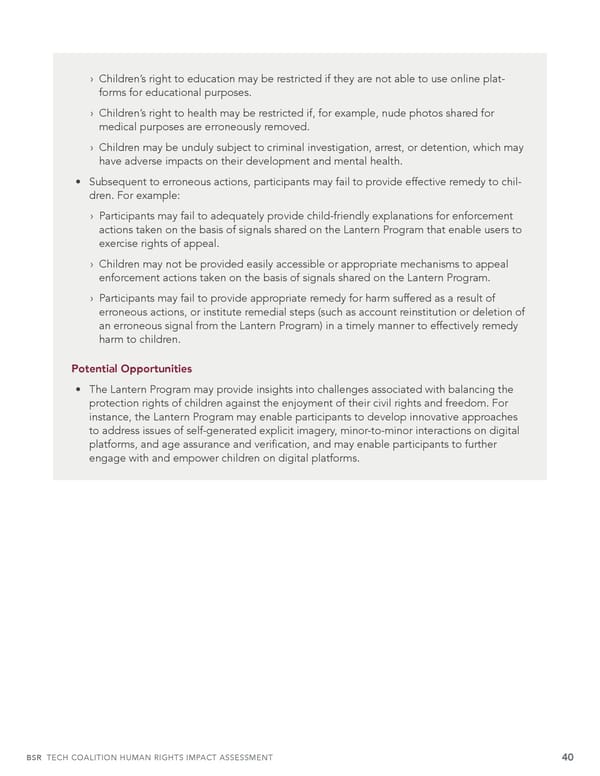› Children’s right to education may be restricted if they are not able to use online plat- forms for educational purposes. › Children’s right to health may be restricted if, for example, nude photos shared for medical purposes are erroneously removed. › Children may be unduly subject to criminal investigation, arrest, or detention, which may have adverse impacts on their development and mental health. • Subsequent to erroneous actions, participants may fail to provide effective remedy to chil- dren. For example: › Participants may fail to adequately provide child-friendly explanations for enforcement actions taken on the basis of signals shared on the Lantern Program that enable users to exercise rights of appeal. › Children may not be provided easily accessible or appropriate mechanisms to appeal enforcement actions taken on the basis of signals shared on the Lantern Program. › Participants may fail to provide appropriate remedy for harm suffered as a result of erroneous actions, or institute remedial steps (such as account reinstitution or deletion of an erroneous signal from the Lantern Program) in a timely manner to effectively remedy harm to children. Potential Opportunities • The Lantern Program may provide insights into challenges associated with balancing the protection rights of children against the enjoyment of their civil rights and freedom. For instance, the Lantern Program may enable participants to develop innovative approaches to address issues of self-generated explicit imagery, minor-to-minor interactions on digital platforms, and age assurance and veri昀椀cation, and may enable participants to further engage with and empower children on digital platforms. BSR TECH COALITION HUMAN RIGHTS IMPACT ASSESSMENT 40
 Tech Coalition Human Rights Impact Assessment of the Lantern Program Page 39 Page 41
Tech Coalition Human Rights Impact Assessment of the Lantern Program Page 39 Page 41